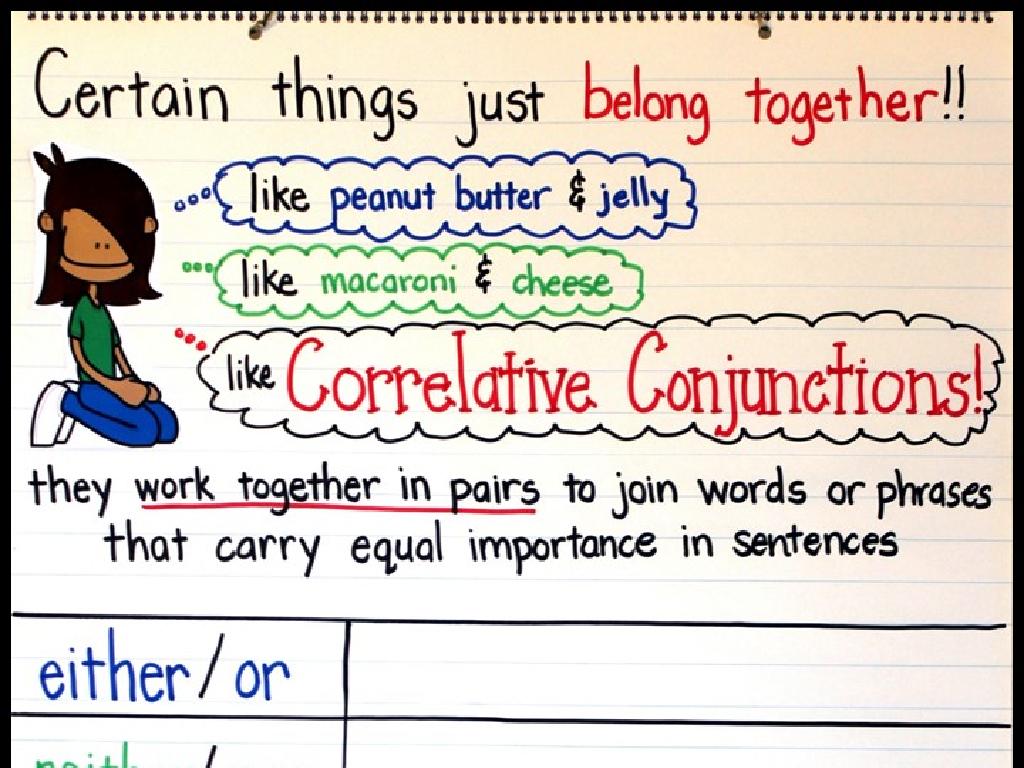Identify The Thirteen Colonies
Subject: Social studies
Grade: Fifth grade
Topic: English Colonies In North America
Please LOG IN to download the presentation. Access is available to registered users only.
View More Content
Exploring the Thirteen Original Colonies
– The foundation of the United States
– How the colonies formed a new nation
– Colonies: Early American communities
– Small settlements established by Britain
– The Thirteen Original Colonies
– Names and locations of the 13 colonies
– Significance in U.S. history
– Their role in the development of America
|
This slide introduces the concept of the Thirteen Original Colonies, which are the building blocks of the United States. Begin by explaining that these colonies were like the first small towns of America, all established along the East Coast by Great Britain. They eventually united to fight for independence and form the country we know today. Make sure to highlight the significance of these colonies in U.S. history, as they played a crucial role in the cultural, political, and social development of the nation. Encourage students to think about how these early communities might compare to where they live now. In the next slides, we will delve into each of the Thirteen Colonies, their unique characteristics, and their contributions to the formation of the United States.
Understanding Colonies in Early America
– What is a colony?
– A colony is a land claimed and governed by a distant country.
– Why were colonies formed?
– To expand territory, trade, and spread religion.
– Colonies vs. Modern States
– Compare colonial boundaries with today’s state lines.
– Significance of the Thirteen Colonies
|
This slide introduces the concept of a colony and sets the stage for understanding the establishment of the Thirteen Colonies in North America. A colony is defined as a territory under the immediate political control of a state, distinct from the home territory of the sovereign. Discuss the various reasons why European powers, particularly England, established colonies, including the desire for economic gain, increased influence, and religious freedom. Highlight the differences and similarities between the original colonial boundaries and the present-day states that exist in the same regions. Emphasize the importance of the Thirteen Colonies in American history as the foundation of the future United States. Encourage students to think about how the reasons for establishing colonies might have influenced the development of the regions and the country as a whole.
Exploring the Thirteen Colonies
– Names of the Thirteen Colonies
– New York, Virginia, Massachusetts, etc.
– Locating the Colonies on a map
– Use a map to find where each colony was established
– Founding dates of each Colony
– When were they founded? From 1607 to 1733
|
This slide introduces the Thirteen Colonies, which are the foundation of the United States’ early history. Start by listing all the colonies: New Hampshire, Massachusetts, Rhode Island, Connecticut, New York, New Jersey, Pennsylvania, Delaware, Maryland, Virginia, North Carolina, South Carolina, and Georgia. Show their locations on a map to give students a visual understanding of their geographical distribution. Discuss the founding dates, highlighting the span from the establishment of Jamestown in 1607 to Georgia in 1733. This will help students grasp the timeline of colonization. Encourage students to remember the names by associating them with their locations and founding dates, perhaps through a mnemonic or a song.
Life in the Thirteen Colonies
– Settlers’ daily routines
– Farming, chores, and community gatherings
– Jobs and colonial economy
– Farming, trade, craftsmanship, and more
– Geography’s impact on life
– Climate and land shaped jobs and housing
– Diversity in colonial culture
|
This slide aims to give students a glimpse into the everyday life of settlers in the Thirteen Colonies. Discuss the typical daily routines, including farming, household chores, and community events. Explain the various types of jobs available, highlighting the importance of agriculture, trade, and skilled crafts. Emphasize how geography, including climate and terrain, influenced the settlers’ lifestyles, from the types of jobs they had to the homes they built. While discussing these points, incorporate the idea that despite commonalities, there was a great deal of diversity in colonial life due to the different nationalities and cultures present in the colonies. Encourage students to compare and contrast life then to their lives today, and prepare them to discuss how geography affects their own lives.
Exploring the Colonial Regions
– New England Colonies
– Known for fishing, shipbuilding, and trade.
– Middle Colonies
– Diverse, with farming and commerce.
– Southern Colonies
– Agricultural, with plantations and slavery.
– Compare the three regions
|
This slide introduces students to the three different colonial regions in North America: New England, Middle, and Southern Colonies. Each region had its own unique geography, climate, economy, and social structure. New England was known for its fishing, shipbuilding, and trade due to its rocky soil and coastal location. The Middle Colonies were known for their diversity and were a mix of farming and commerce, with better soil for crops like wheat. The Southern Colonies were largely agricultural, with a focus on plantations and a reliance on slave labor. Encourage students to think about how the geography and climate of each region might have influenced the economy and way of life. In the next class, we will delve deeper into each region and compare their similarities and differences.
Governing the Thirteen Colonies
– Colonies’ governance methods
– Each colony had its own government, often led by a governor
– Town meetings & assemblies
– Town meetings and assemblies allowed colonists to voice opinions
– Self-governance in colonies
– Colonists had some power to govern themselves, a step towards democracy
|
This slide explores the governance of the Thirteen Colonies. Students will learn that each colony had its own unique system of government, typically with a governor appointed by the British crown. However, colonists also had a say in their governance through town meetings and colonial assemblies, where they could discuss and vote on local issues. This early form of self-governance was crucial in the development of democratic principles that would later shape the United States. Encourage students to think about how these meetings might have looked and felt, and discuss the importance of having a voice in government.
Challenges and Survival in the Thirteen Colonies
– Early colonists faced many hardships
– Harsh weather, diseases, and scarce resources
– Colonists and Native American relations
– Trade, conflict, and cultural exchanges occurred
– Adapting to life in the new world
– Learning to farm, build, and live off the land
– Overcoming obstacles for survival
|
This slide aims to give students an understanding of the difficulties encountered by the early colonists and how they managed to survive. Discuss the various challenges such as extreme weather conditions, unfamiliar diseases, and the struggle to find and manage resources. Highlight the complex relationships between the colonists and Native Americans, including both cooperative and hostile interactions. Emphasize the colonists’ ability to adapt to their new environment by learning agricultural techniques, construction methods, and other survival skills. Encourage students to think about how they would have coped with these challenges and to appreciate the resilience and ingenuity of the colonists.
The Road to Independence: Thirteen Colonies
– Colonies evolve into states
– Seeds of independence
– Early acts of defiance and autonomy set the stage for independence.
– Thirteen Colonies’ significance
– The Thirteen Colonies were crucial in the formation of the United States.
– Reflection on U.S. foundations
– Understanding the colonies helps us appreciate the values and struggles that shaped the nation.
|
This slide aims to provide students with an understanding of the transformation of the Thirteen Colonies from being under British rule to becoming independent states that formed the United States of America. Highlight the early signs of American independence, such as the spirit of self-governance and resistance to British policies. Emphasize the importance of the Thirteen Colonies in U.S. history as the birthplace of the nation and the origin of many American ideals and values. Encourage students to reflect on how the historical events in these colonies laid the groundwork for the country’s foundation and the principles of democracy, liberty, and justice.
Class Activity: Create Your Colony!
– Divide into regional groups
– Design your colony’s features
– Choose a name, location, and what your colony specializes in
– Create a flag and government system
– Draw a flag that represents your colony’s values
– Prepare a class presentation
– Decide how your colony will be governed and who will make the rules
|
This activity is designed to help students apply their knowledge of the Thirteen Colonies by creating their own. Divide the class into small groups and assign each group a region similar to the New England, Middle, or Southern colonies. Each group will then create a name and decide on the location of their colony within their region. They will design a flag that represents their colony’s values and resources. Students will also create a basic government system, deciding how their colony will make laws and how leaders will be chosen. Encourage creativity and ensure that each group presents their colony to the class, explaining their choices. This will help students understand the diversity and characteristics of the original colonies.





